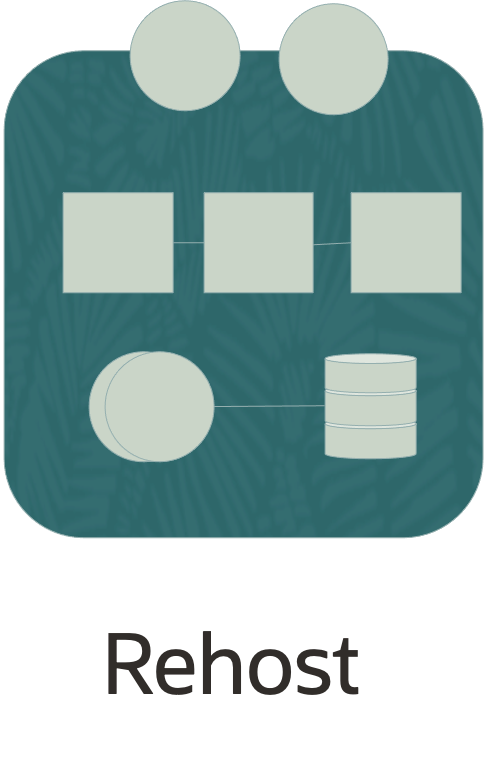Rehost

Overview
A re-hosting approach is the most straightforward approach available that delivers increased business benefit. The application is moved from its current hosting provider (this could be on-premises or in another cloud) to a new infrastructure provider — this could be a public cloud provider, a hosting company or an on-premises cloud. This is also typically called “Lift and shift” and its core principle is to change as little as possible to facilitate easy migration to the new infrastructure.
Benefits
| Time to migrate |  |
| Technical difficulty |  |
| Strategic Value |  |
For small and simple applications this is a practical and effective approach. Moving a single, stand-alone VM is probably the simplest possible cloud migration. As applications become more complex with a larger number of components with dependencies, then even a lift-and-shift can be quite challenging, especially when minimal migration down-time is a business requirement.
The benefits of re-hosting are limited to the benefits provided by a new infrastructure platform. Re-hosting to a non-cloud environment has the least benefit, while moving to a cloud infrastructure provider can deliver some cost-savings and efficiencies as a result of simpler operational management.
Challenges
Even in this simplest of cases, certain deployment changes will always be necessary. For example, the network topology and security elements will be replaced with cloud equivalents, the VM platform might change or some infrastructure software might be upgraded (e.g., upgrading to a cloud-certified version of middleware or database) — but none of these challenge the “change as little as possible” principle.
A key danger of this approach is showing a return on investment over time. If the migration project is significantly large, then for such a multi-year project it will be necessary for the project to show a return on investment, and this may prove challenging - especially if the legacy infrastructure cannot be decommissioned until the end of the program.
Similarly, as this is a like-for-like migration, the business benefits will be small, and so the cost justification will need to be solely on IT cost reduction. Typically, it is only at large scale will projects based on this approach show significant long-term benefit.
Use Cases
These are typical use-cases, listed in order of complexity :
- Virtual Machine migration
- virtual-machine migration + change of operating system (within operating system family)
- Convert bare-metal to virtual-machine
- re-installation of platform software (e.g. app server, database server, middleware etc)
As the changes we make to the system grow in intrusiveness or impact to the running system, then we are more likely to class a migration as a “re-platform” — which will be covered in the next section.
The distinction between re-hosting and re-platforming is not always clear-cut, but in most cases if you are changing the family of the operating system (e.g. Unix -> Linux), changing any of the server platform (e.g. database, middleware) then it’s more likely to be considered a re-platforming.